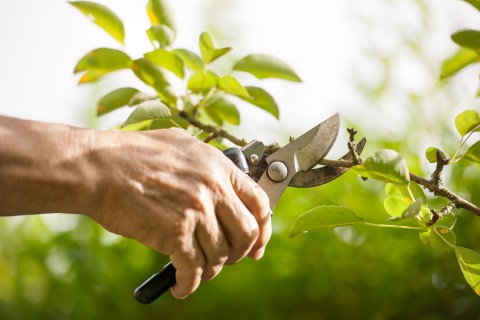
Summer is a great time to prune your trees and shrubs. The plants have gone through their big spring push. They are preparing for the summer heat and producing buds for next year’s spring growth.
This spring has been as close to perfect growing conditions as we can get in the Pacific Northwest. Temperatures in the 60s and 70s, frequent rain showers and only a few days where the temperatures got really warm provided optimal opportunities for plants to grow with no limiting factors. The tremendous growth means your plants likely need to be pruned.
Summer pruning is useful if you would like to slow the growth of a tree or branch. Pruning reduces the the total leaf surface, which reduces the amount of food produced and sent to the roots.
Summer is also a great time for restorative pruning. This corrects problems resulting from over-pruning or poor pruning, or cleans up damage from storms or vandalism. Proper pruning will begin to restore most plants’ natural shape.
In summer, it is easier to evaluate the plant’s canopy for health and vigor. You can see exactly what you are removing, such as defective limbs. You can shorten long lengths of new growth to reduce the risk of storm damage next fall or winter.
When performed properly, pruning can reduce diseases in plants. Selectively thinning branches will increase circulation and light penetration throughout the crown, keeping the plant or tree healthier. It is easier to do this when the plants are in leaf, so you can see exactly how much to take out.
It is important to prune properly to not stress the plant or cut off the valuable buds. In most cases, one should avoid the inclination to top, shear or hedge. Doing so creates rapid regrowth that can destroy the natural form of the plant.
Knowing how big your trees and shrubs are capable of growing in 5 to 20 years is the key for a healthy landscape. If the plant is the right plant in the right place, pruning is mainly focused on dead or broken limbs, crossing or rubbing branches and minor aesthetic pruning. Careful evaluation of the tree’s form and knowledge of likely regrowth patterns will help prevent new problems from developing.
In Harmony has certified arborists on staff. If you would like a free estimate for summer pruning, contact our office.
If you’d like to learn more about how to prune, our Pinterest Garden Care board has links to a number of pruning resources.
